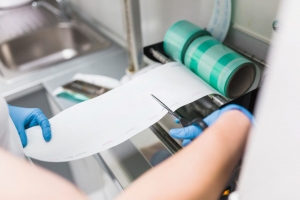please click here:
https://www.yjing-extrusion.com/aboutus.html
Aluminum extrusion die design is a critical aspect of the aluminum extrusion process, enabling the creation of complex and custom profiles used across industries such as automotive, architecture, electronics, and construction. This article provides an in-depth exploration of aluminum extrusion die design, covering types of dies, design principles, materials, manufacturing processes, and maintenance best practices. Rich with visuals and videos, it aims to equip designers, engineers, and manufacturers with the knowledge to optimize die performance and product quality.
What Is an Aluminum Extrusion Die?
An aluminum extrusion die is a thick steel disk with a precisely machined opening that shapes aluminum as it is forced through under high pressure. The die opening corresponds exactly to the cross-sectional profile desired in the final aluminum product. Typically made from high-strength tool steels like H13, these dies withstand pressures up to 15,000 tons during extrusion.
Types of Aluminum Extrusion Dies
Solid Dies
Solid dies produce profiles with no enclosed voids, such as rods, beams, or angles. They are the simplest and generally the least expensive to manufacture. A solid die stack usually consists of:
-
Feeder Plate: Controls metal flow.
-
Die Plate: Shapes the profile.
-
Backer Plate: Supports the die tongue to prevent distortion.
-
Bolster: Supports the extrusion load.
Hollow Dies
Hollow dies create profiles with one or more internal cavities, such as tubes or window frames. These dies are more complex and consist of:
-
Mandrel: Forms the hollow sections inside the profile.
-
Die Cap (Die Plate): Shapes the outer profile.
-
Backer: Reinforces the die and manages thermal conditions.
Semi-Hollow Dies
Semi-hollow dies produce profiles that partially enclose voids. They are a hybrid between solid and hollow dies, featuring a mandrel with port holes but without fully enclosed cavities. The complexity and cost lie between solid and hollow dies.
The Aluminum Extrusion Die Design Process
Concept Development
The design process begins by defining the desired profile shape, wall thicknesses, and tolerances. Designers must consider:
-
Uniform metal flow to avoid defects.
-
Structural rigidity of the die.
-
Surface finish requirements.
-
Cost constraints.
3D Modeling and Simulation
Using CAD software, the die design is modeled in 3D to identify potential manufacturing or extrusion issues. Finite Element Analysis (FEA) simulations predict:
-
Metal flow behavior.
-
Thermal stresses.
-
Die deformation risks.
This step helps optimize bearing lengths and flow channels to ensure uniform extrusion speed and quality.
Die Machining and Heat Treatment
High-precision CNC machining creates the die components from tool steel, followed by heat treatment (often vacuum heat treatment) to achieve hardness between HRC 48-56. This ensures durability and wear resistance under extreme extrusion conditions.
Surface Treatment
Coatings such as nitriding, chromium plating, or diamond-like carbon reduce friction and wear, extending die life and improving extruded surface quality.
Key Design Considerations for Aluminum Extrusion Dies
Uniform Material Flow
Ensuring smooth, uniform flow of aluminum through the die prevents turbulence and defects like warping or surface inconsistencies. Techniques include:
-
Adjusting bearing lengths to balance flow velocity.
-
Incorporating flow channels or feeders.
-
Using feeder dies to control contour and reduce billet-to-die contact.
Thermal Management
Dies experience intense heat during extrusion. Efficient cooling and thermal control prevent thermal shock and maintain dimensional accuracy. Some dies incorporate cooling channels or use materials with good thermal conductivity.
Die Material Selection
Common die steels include H13, H26, 8407, and SKD61, chosen for their toughness, wear resistance, and thermal properties. The right material ensures the die withstands pressure and heat without premature failure.
Manufacturing and Maintenance of Aluminum Extrusion Dies
Manufacturing Workflow
-
Drawing Approval: Customer approves die design drawings.
-
Precision Machining: CNC machining of die components.
-
Heat Treatment: Hardening and tempering.
-
Surface Coating: Application of wear-resistant coatings.
-
Assembly and Testing: Die stack assembly and trial extrusion runs.
Maintenance and Correction
Regular inspection is critical to detect wear, cracks, or distortion. Maintenance practices include:
-
Die corrections based on extrusion performance.
-
Re-machining or recoating worn surfaces.
-
Site instruction and support for long-term customers.
Frequently Asked Questions (FAQs)
Q1: What materials are commonly used for aluminum extrusion dies?
A1: High-strength tool steels like H13, H26, 8407, and SKD61 are commonly used due to their toughness, wear resistance, and thermal properties.
Q2: How does die design affect extrusion quality?
A2: Proper die design ensures uniform metal flow, prevents defects like warping, and achieves consistent wall thickness, directly impacting the quality of the extruded profile.
Q3: What is the difference between solid, hollow, and semi-hollow dies?
A3: Solid dies produce profiles without internal voids, hollow dies produce profiles with one or more cavities, and semi-hollow dies produce partially enclosed voids.
Q4: How is thermal management handled in extrusion dies?
A4: Thermal management includes using materials with good thermal conductivity, incorporating cooling channels, and controlling extrusion temperature to prevent thermal shock and maintain accuracy.
Q5: What maintenance is required for extrusion dies?
A5: Regular inspection for wear and cracks, die corrections, re-machining, recoating, and proper handling extend die life and maintain extrusion quality.
Summary
Aluminum extrusion die design is the cornerstone of producing high-quality, complex aluminum profiles. Understanding the types of dies, design principles, material selection, manufacturing processes, and maintenance strategies is essential for optimizing extrusion performance. Advances in CAD modeling, FEA simulation, precision machining, and surface treatments have significantly enhanced die durability and profile accuracy. With proper design and care, extrusion dies deliver consistent, defect-free products for a wide range of industrial applications.
Article Abstract
This comprehensive guide explores aluminum extrusion die design, detailing die types, design processes, materials, and maintenance. It highlights key factors like uniform metal flow, thermal management, and precision machining that influence extrusion quality. The article includes visuals and videos to aid understanding and concludes with FAQs to address common queries, providing a valuable resource for engineers and manufacturers aiming to optimize aluminum extrusion dies.






